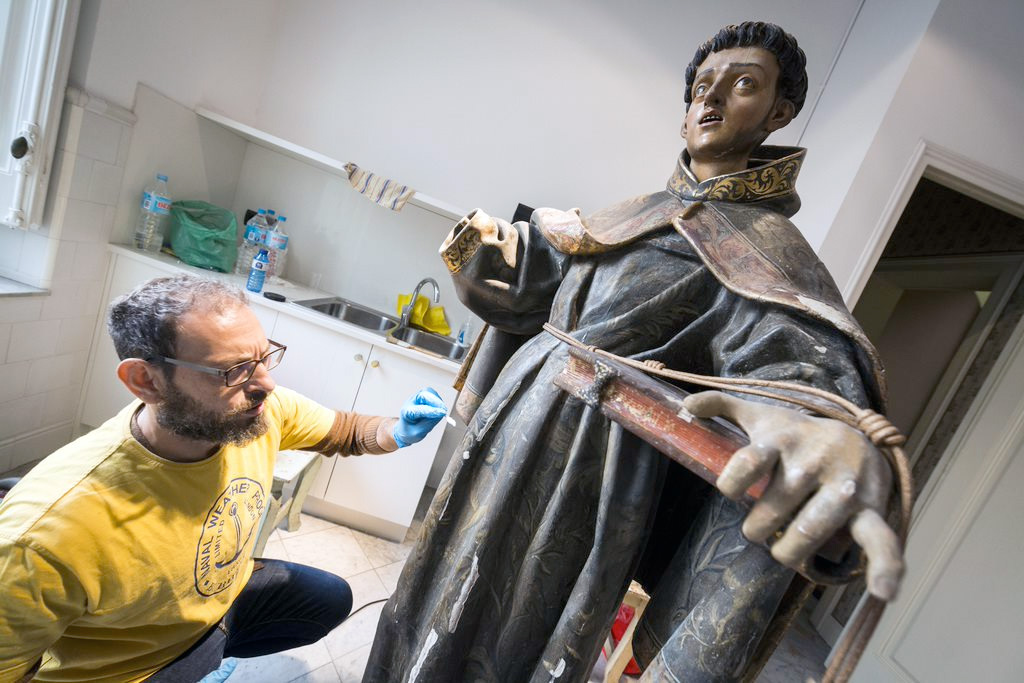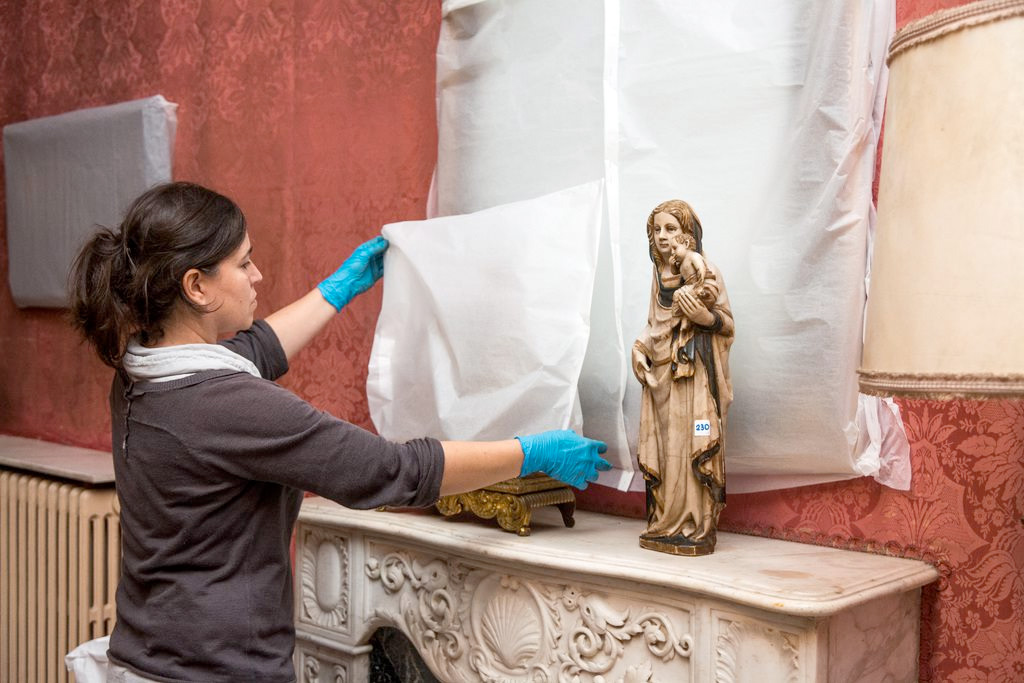The Foundation's restoration work
In July 2013, when the Foundation took physical possession of the property, expectations were high, but what it found there was devastating. Everyone had heard the stories of luxury and ostentation associated with Muñoz Ramonet’s name. This iconic space inhabited by the wealthy classes, whose rooms were once illuminated by light and splendour, had turned into little more than dust and decline. The artworks piled on the floor in the second-floor corridors of the main building were the last witnessed of the desertion of a house that had practically become a ghost over the course of the legal proceedings.
At that time, the Foundation got to work on different fronts to safeguard the cultural legacy it was receiving. It spearheaded experts in each field to conduct a series of studies on the buildings, garden and different types of artistic objects found in the houses. In addition, as the Foundation was aware of the importance of and preserving the legacy and its duty to do so, it developed a preventive conservation programme for the spaces in the buildings and the artworks to monitor their state of conversation, mitigate any risks that might threaten them and stabilise them to make sure they stayed intact before any work on them could begin. The preventive conservation programme is still in place today.
In 2015, the Foundation launched the project to restore the collection of seven Flemish, French and Dutch tapestries from the sixteenth, seventeenth and eighteenth centuries. This task was carried out by the Terrassa Documentation Centre and Textile Museum and was finished in 2018.
The year 2017 saw the birth of the La Fundació Restaura programme, which sought to spotlight a type of conservation-restoration activity that is generally part of an institution’s internal workings. For two years, the vestibule at the entrance to the main house was turned into a temporary conservation laboratory. Visitors strolling around the garden were able to see the experts work and track the restoration of objects like a sixteenth-century polychrome wood sculpture depicting Mary Magdalene, a pair of German porcelain candelabras from Dresden made by the Carl Thieme Factory in the late nineteenth century, and a pair of Sèvres-style vases made from fine earthenware and gilt bronze, also from the nineteenth century. Other pieces restored before visitors’ eyes included paintings from the seventeenth-century French School, such as the portrait of King Louis XIV, and the oil painting on wood, Amors Tardans, by the seventeenth-century Dutch School.
In 2023, the Foundation relaunched this programme with an ambitious project: on an exceptional basis, visitors are able to witness the gradual process of cleaning and restoring the murals by Ramón Stolz Viciano in the dining room of the main house. They are actually oil paintings on canvas secured to the wall. The current instability of their paint layer means that they cannot be removed to renovate the room without prior conservation work.



